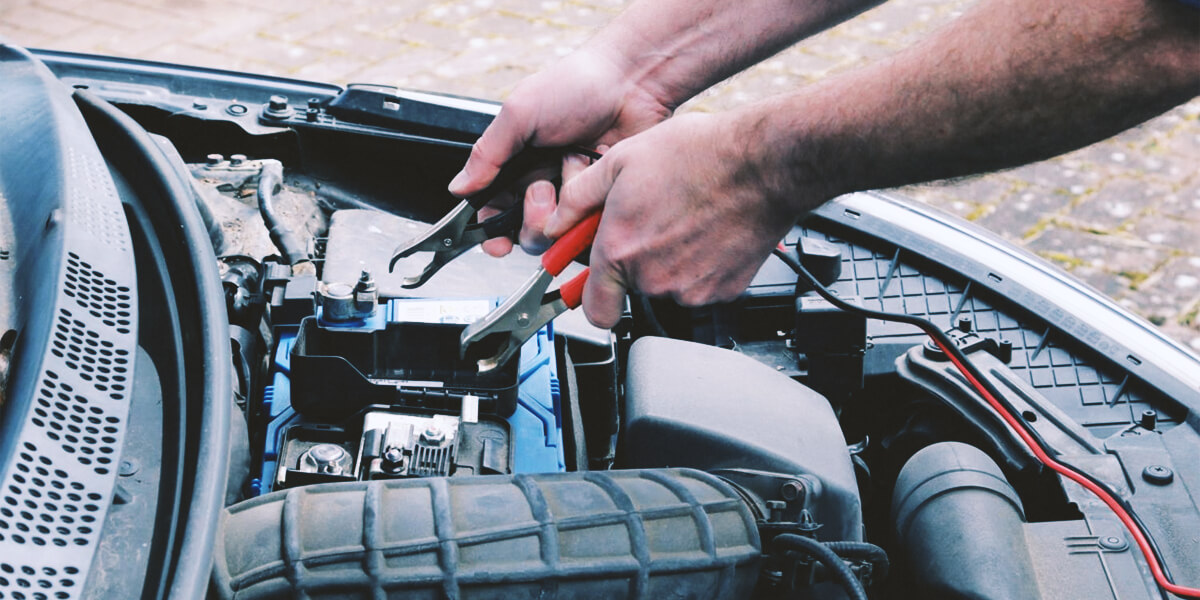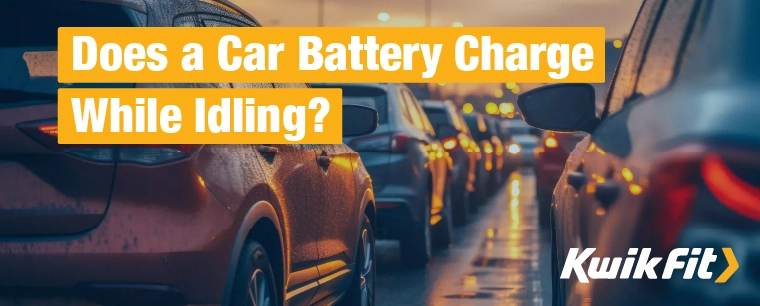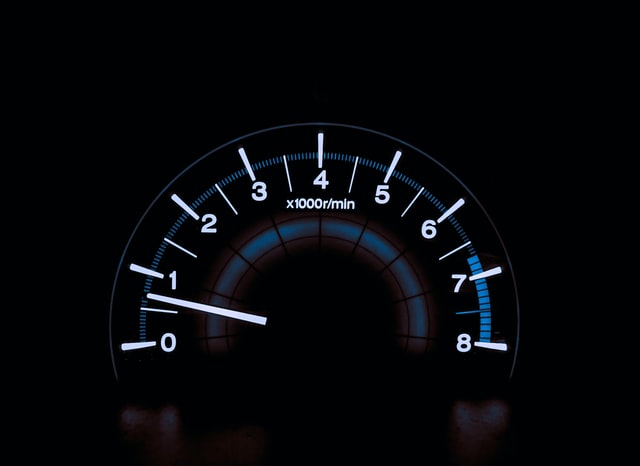Idling a car can charge the battery, but it’s not the most efficient method. A running engine at idle speed produces less electrical power than when driving.
Car batteries are essential for starting the engine and powering electrical components when the engine is off. To maintain your battery’s health and ensure it charges appropriately, it is crucial to understand the role of the alternator. The alternator converts mechanical energy into electrical energy, replenishing the battery while your engine runs.
Idling your car does charge the battery, but the charge is minimal compared to driving. At idle, the engine runs at a lower RPM, which means the alternator generates electricity at a slower rate. For those who rely on their vehicles for daily commutes or long trips, it’s essential to know that regular driving at higher speeds is more effective for fully charging the battery. To keep your battery in peak condition and avoid getting stranded with a dead battery, consider driving your car rather than leaving it idle to charge.
Car Charge the Battery
Charging your car battery is not just a routine task; it’s an opportunity to keep your vehicle running smoothly and efficiently. Picture the satisfaction you’ll feel when your car returns to life, ready to take you on new adventures. By ensuring your battery is fully charged, you’re investing in the longevity and reliability of your vehicle. It’s a simple yet impactful way to show your car some love, rewarding you with consistent performance and peace of mind. So plug in, charge up, and hit the road confidently, knowing you’re powered up for whatever journey lies ahead!
Introduction To Car Battery Charging
Welcome to the electrifying world of car maintenance, where understanding the basics of your vehicle’s power source—the battery—is crucial. Let’s explore how a car battery charges and debunk some common myths.
Basics Of Car Battery Function
Car batteries store energy to start your engine and power electronics when the engine is off. The alternator replenishes the battery when the engine runs, a vital cycle for the car’s operation.
- The chemical reaction releases electricity.
- The alternator restores the charge while driving.
- Energy powers the starter motor, lights, and accessories.
Common Myths About Car Batteries
Many drivers believe idling their car can charge the battery fully. This is a myth. Idling for too long can cause more harm than good. Here’s why:
| Myth | Fact |
|---|---|
| Idling charges the battery quickly. | The alternator needs higher RPMs to charge effectively. |
| Longer idling equals more charge. | Excessive idling can drain the battery and waste fuel. |
| Turn off electronics to charge faster. | Modern alternators handle multiple demands well. |
Remember, driving your car is the best way to ensure a complete and healthy charge for your battery.

Credit: carefreehomewatch.com
Idling And Battery Charging
Many drivers wonder if leaving their car idle will charge the battery. Let’s explore how idling impacts battery charging and the science behind it.
How Idling Affects Your Battery
Idling your car seems like a quick fix to charge the battery. But does it work? Idling means running your car’s engine when the vehicle is not moving. This action can keep the battery alive, but it’s not the best method to charge it.
- Idling provides low power output from the alternator.
- The battery charges slower than when driving.
- Modern vehicles use technology that draws power, even when idle.
The Science Behind Charging While Idling
Let’s dive into the science. Your car’s alternator is the crucial player in charging the battery.
| Car State | Alternator Speed | Charging Efficiency |
|---|---|---|
| Driving | High | Optimal |
| Idling | Low | Reduced |
When driving, the alternator turns faster, producing more electricity. This power efficiently charges the battery. While idling, the alternator turns slowly. It generates less energy, leading to slower charging.
The alternator needs higher revs to charge appropriately. This is best achieved when the car is in motion.
Debunking Myths
Many car owners believe certain myths about idling and battery charging. Let’s clear the air and debunk these common myths.
Myth 1: Idling Quickly Recharges The Battery
Idling your car won’t charge the battery fast. It charges slowly.
When the engine idles, the alternator produces less electrical power. The battery takes longer to charge.
Driving your car is a better way to charge the battery quickly. The alternator works more efficiently at higher RPMs.
Myth 2: Idling Is Good For Your Engine And Battery
Idling is not beneficial for your engine or battery. Extended idling can cause engine wear.
It can also drain the battery instead of charging it. Modern cars don’t need to idle for long before driving.
It’s best to drive off gently after starting the engine. This helps the battery charge better.

Credit: givenssparks.com
The Truth About Idling
Many believe that idling a car can charge its battery. This simple act seems like a perfect solution to boost battery life, right? Let’s dive into the facts and uncover the truth about idling and battery charging.
How Much Charge Does Idling Provide?
When a car idles, the alternator generates electricity. This power runs the engine and slowly charges the battery. But idling isn’t a fast charge method. It provides a trickle charge, which is less effective than driving. While idling, the charge rate is minimal, often just enough to power the electrical systems, like headlights or the radio.
| Condition | Charge Provided |
|---|---|
| Engine Idling | Minimal |
| Car Driving | Optimal |
Risks Of Excessive Idling
- Wastes fuel
- Increases engine wear
- Emits unnecessary pollutants
- This may lead to battery strain
Excessive idling can do more harm than good. It wastes fuel and adds to engine wear. Harmful emissions rise, damaging the environment. The battery can also suffer. Instead of charging, it could drain if the electrical load is high.
Alternatives To Idling For Charging
Many drivers believe that idling their car can charge the battery. Yet, this method is not the most efficient or beneficial for the vehicle’s overall health. Let’s explore better alternatives that save time and extend battery life.
Driving Vs. Idiling For Battery Health
Driving your car is far more effective than idling. When you drive, the alternator works at full capacity. It charges the battery more quickly and effectively. In contrast, idling provides a low charge level. This slow charge can fail to keep up with your battery’s needs.
- Driving – Charges battery quicker, better for overall health.
- Idling – Offers minimal charge, not recommended for long periods.
Effective Ways To Charge Your Battery
Aside from driving, other methods can efficiently charge your car battery. These are better alternatives to prolonged idling.
| Method | Description |
|---|---|
| Battery Charger | Use a dedicated charger for fast and safe charging. |
| Solar Charger | Great for maintaining charge and eco-friendly. |
| Driving Habits | Regular use prevents battery drain. |
- Connect a battery charger when parked.
- Consider a solar charger for daytime charging.
- Adopt regular driving habits to keep the battery healthy.
Remember, batteries thrive on regular use and proper charging methods. Choose the best option for your lifestyle and vehicle needs.

Credit: www.kwik-fit.com
Maintaining Your Car Battery
Your car’s battery serves as its vital organ. It requires routine maintenance to function at its peak. A well-maintained battery ensures your car starts quickly and runs smoothly.
Does idling charge your battery? Yes, but it’s not the most efficient method—your battery charges when the engine runs. Yet, idling for too long can cause more harm than good.
Best Practices For Battery Longevity
To maintain the health of your battery, heed these tips:
- Regularly drive your car for extended periods to charge the battery.
- Turn off lights and electronics when the engine is off.
- Keep the battery clean. Check for corrosion on terminals.
- Test your battery often. Use a voltmeter to check charge levels.
- Secure the battery firmly. Vibrations can damage it.
When To Replace Your Car Battery
Look out for these signs:
| Sign | Action |
|---|---|
| Slow engine crank | Test battery |
| Check that the engine light is on | Visit a mechanic |
| Swollen battery case | Replace the battery |
| Battery over 3 years old | Consider a replacement |
Remember, extreme temperatures kill batteries faster. Cold weather can freeze and crack them; hot weather can evaporate the internal fluid. Therefore, it is recommended that batteries exposed to severe conditions be replaced sooner.
Expert Insights
Welcome to our blog’s ‘Expert Insights’ section, where we delve into car batteries and charging mechanics. There’s a common belief that idling a car can charge its battery. Let’s explore this topic with advice from seasoned mechanics and a look at the role of alternators.
Mechanic’s Advice On Idling And Charging
Idling your car does charge the battery, but it’s not the most efficient method. Mechanics suggest that driving is better for charging.
- Idling can charge a battery, but it takes longer.
- Driving at higher speeds increases alternator output and charges faster.
- Idling for too long can waste fuel and cause engine wear.
For a quick charge, mechanics recommend driving the car rather than idling.
The Role Of Alternators In Charging
The alternator is key to charging your car’s battery. When the engine runs, the alternator charges the battery and powers the electrical system.
| Engine State | Alternator Output | Charging Efficiency |
|---|---|---|
| Idling | Low | Slower Charging |
| Driving | High | Faster Charging |
At idle, alternators produce less power and, therefore, charge slowly. Higher RPMs during driving increase power and charge the battery more effectively.
For a healthy battery and electrical system, rely on your alternator while driving rather than idling.
Frequently Asked Questions
How Long Should I Idle My Car To Charge The Battery?
Idling your car for 5-10 minutes can help charge the battery, but driving longer is more effective.
Does Idling A Car Drain The Battery?
Idling a car typically does not drain the battery; it usually charges it as the alternator generates power to replenish the battery while the engine runs.
Does Revving Idle Car Charge Battery?
Revving an idle car can help charge the battery, but it’s less effective than driving, promoting better charging through sustained higher RPMs.
How much idle time does a car need before the battery runs out?
A car battery can die in as little as two weeks if it remains idle, but it can sometimes last up to two months. Factors like battery age and climate can impact this duration.
Conclusion
To wrap up our discussion, idling isn’t the best method for charging your car battery. It’s inefficient and can even harm your battery over time. Consider alternatives like driving regularly or using a dedicated charger for a healthy battery and vehicle. Remember, proper maintenance outshines idling every time.
Keep your car’s power source in prime condition for a smooth, uninterrupted ride.

I am a battery specialist writer and blogger based in the USA & UK . I have been working with battery power energy for 3 long years and I give trips on low battery power problem and solutions . I have a lot of experience with battery power and I share them here.

